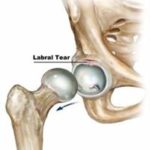What Are the Best Lumbar Spondylosis Exercises?
Back pain’s no joke especially when it turns chronic and follows you like a shadow. If you’ve been told you’ve got lumbar spondylosis, chances are, you’re searching high and low for relief. But here’s the good news: you’re not helpless! In fact, with the right approach, especially with lumbar spondylosis exercises, you can stretch your way toward comfort, mobility, and better days ahead. So, what’s worth trying, and what’s just fluff? Let’s dig into it, step by step.
Easy Lumbar Spondylosis Exercises That Help
Now that’s the million-dollar question, isn’t it? When your lower back feels like it’s been through a wrestling match, the last thing you want is to twist the wrong way and make it worse. But the right exercises? They’re like giving your spine a much-needed spa day.
Here’s a list of gentle yet effective exercises that can help:
- Pelvic Tilts
- Lie flat on your back, knees bent, feet on the floor.
- Tighten your core and push your lower back into the floor.
- Hold for 5 seconds and release.
- Repeat 10–15 times.
- Cat-Cow Stretch
- On all fours, arch your back (like a cat).
- Then drop your belly and lift your head (like a cow).
- Flow between the two for 1–2 minutes.
- Knee-to-Chest Stretch
- Lie on your back.
- Pull one knee toward your chest.
- Hold for 20–30 seconds, then switch legs.
- Repeat 3–4 times each side.
- Bridges
- Lie on your back with knees bent.
- Lift your hips slowly and hold for 3 seconds.
- Lower down gently.
- Do 10 reps to start.
These movements improve posture, reduce stiffness, and boost core strength all things your aching back will thank you for.
Physiotherapy Exercises for Lumbar Spondylosis
Alright, so you’re not just looking for random YouTube stretches you want real-deal physiotherapy exercises for lumbar spondylosis. The kind backed by professionals and tailored to target the source of your pain, not just the symptoms.
Here are some rehab-approved moves:
Guided Wall Slides
- Stand against a wall with your back flat.
- Slide down into a half-squat.
- Hold for 5 seconds, then rise slowly.
- Great for improving lower back support.
Seated Forward Bend (Modified)
- Sit on a sturdy chair, feet flat.
- Slowly lean forward to touch your toes or ankles.
- Stretch only as far as comfortable, no bouncing!
Core Stability Workouts
- Try using a resistance band or a small Pilates ball.
- These tools help activate deep core muscles without straining your back.
Pro tip: Always work with a licensed physiotherapist to build a routine that’s safe, gradual, and suited to your body.
Lumbar Spondylosis Treatment Options Beyond Exercise
Of course, stretching isn’t the only item in the toolbox. If you’re aiming for real relief, lumbar spondylosis treatment often takes a multi-angle approach. How can you manage it? Let’s break it down.
Conservative Treatments
- Heat therapy to soothe stiff muscles.
- Cold packs for inflammation.
- Over-the-counter pain relief, like NSAIDs.
Hands-On Therapies
- Chiropractic adjustments can improve mobility.
- Massage therapy relaxes tight muscles around the spine.
- Acupuncture for reducing chronic pain (some people swear by it!).
Advanced Interventions
- Epidural steroid injections for severe pain flare-ups.
- Surgical options, but only if nothing else works and that’s rare.
Remember: it’s not about doing everything at once. The goal is to build a sustainable, personalized care plan.
Is There a Permanent Cure for Lumbar Spondylosis?
You might be wondering, “Can I just fix this once and for all?” Here’s the honest scoop when it comes to a permanent cure for lumbar spondylosis, there’s no magic pill or overnight miracle. But don’t let that bring you down.
With consistent exercise, smart habits, and early intervention, you can dramatically reduce pain, prevent further damage, and live your life to the fullest. It’s about managing the condition so it doesn’t manage you.
And hey, plenty of folks out there with lumbar spondylosis are hiking, biking, even dancing pain-free. You could be one of them.
Lumbar Spondylosis Exercises for Elderly Adults
Now, if you’re a senior or caring for one, you’re likely asking, “Are there any lumbar spondylosis exercises for elderly folks that are safe and easy?”
Absolutely. Here’s a short list of low-impact moves perfect for older adults:
Gentle Chair Marches
- Sit upright in a sturdy chair.
- Slowly lift one knee, then the other, as if marching.
- Keeps circulation going and warms up the hips.
Ankle Pumps
- Sit or lie down.
- Point your toes forward, then flex them back.
- Great for circulation and light nerve stimulation.
Standing Side Bends
- Stand with feet shoulder-width apart.
- Gently reach one hand down your leg, keeping your back straight.
- Switch sides.
Just remember: it’s all about slow and steady. No rush. No pain. And always check in with a healthcare provider before starting anything new.
FAQs
- Can lumbar spondylosis go away completely?
Not exactly, but it can be managed really well. With consistent care, many people go symptom-free for long periods.
- Are these exercises safe to do at home?
Yes, but start slow. If you feel sharp pain or dizziness, stop and consult a professional.
- How often should I do these exercises?
3–5 times per week is a good starting point. Over time, you’ll find what works best for your body.
- Should I use a heating pad before or after exercising?
Use heat before to loosen up the muscles, and ice after if there’s any swelling or soreness.
Conclusion
Living with lumbar spondylosis doesn’t mean giving up the activities you love, it just means being a little smarter about how you move and care for your body. From targeted stretches to physiotherapy-backed routines, there’s a lot you can do to keep back pain at bay.
So, what are you waiting for? Grab a mat, take it slow, and give your spine the love it deserves. Because a flexible back is a happy back and you’ve got this.











